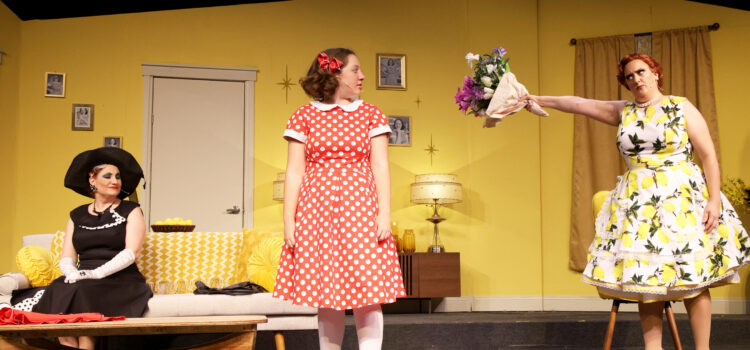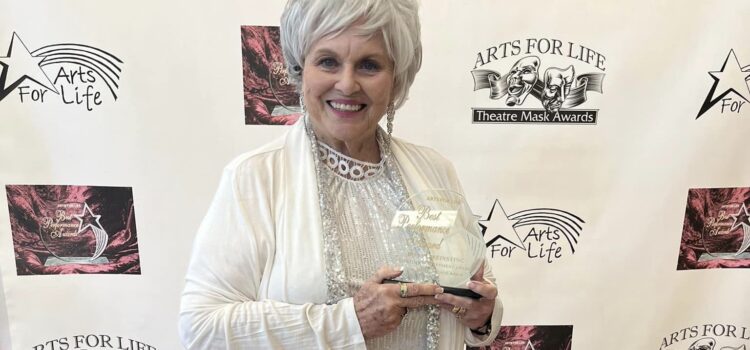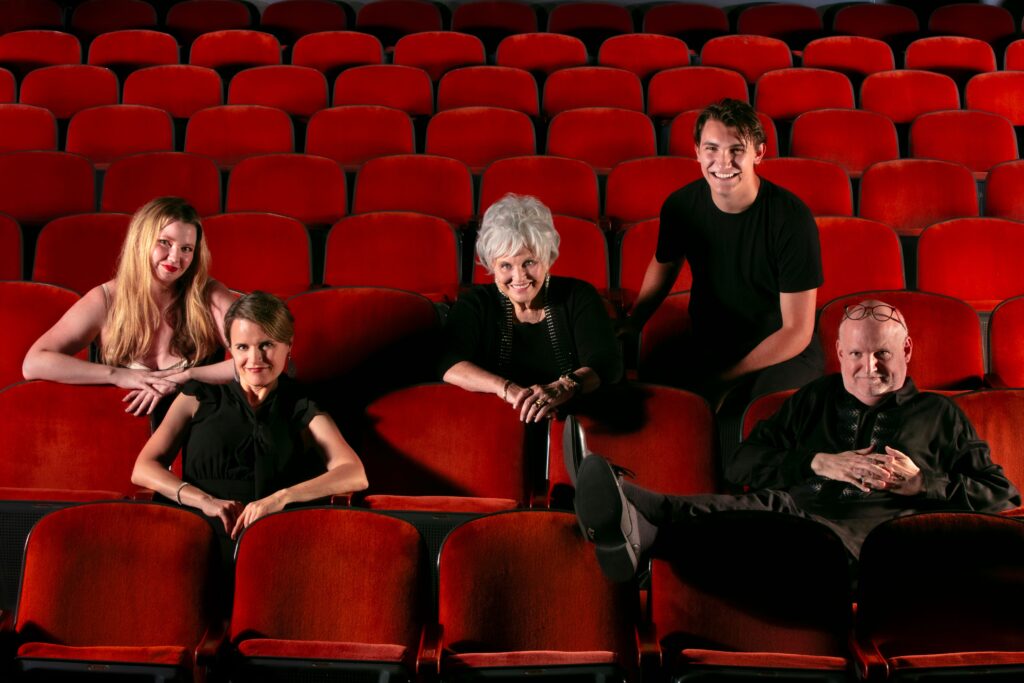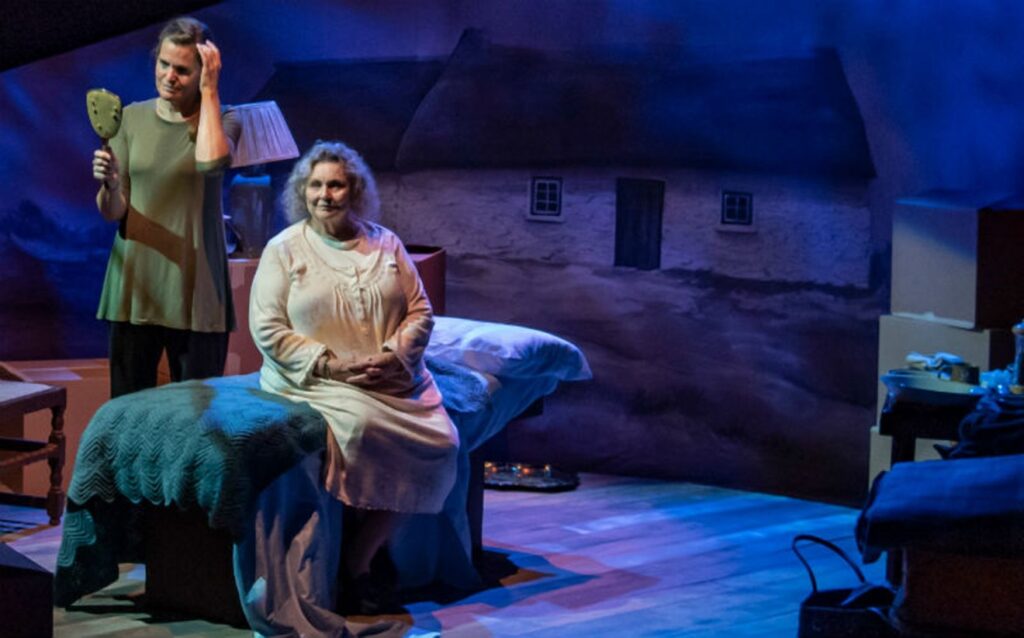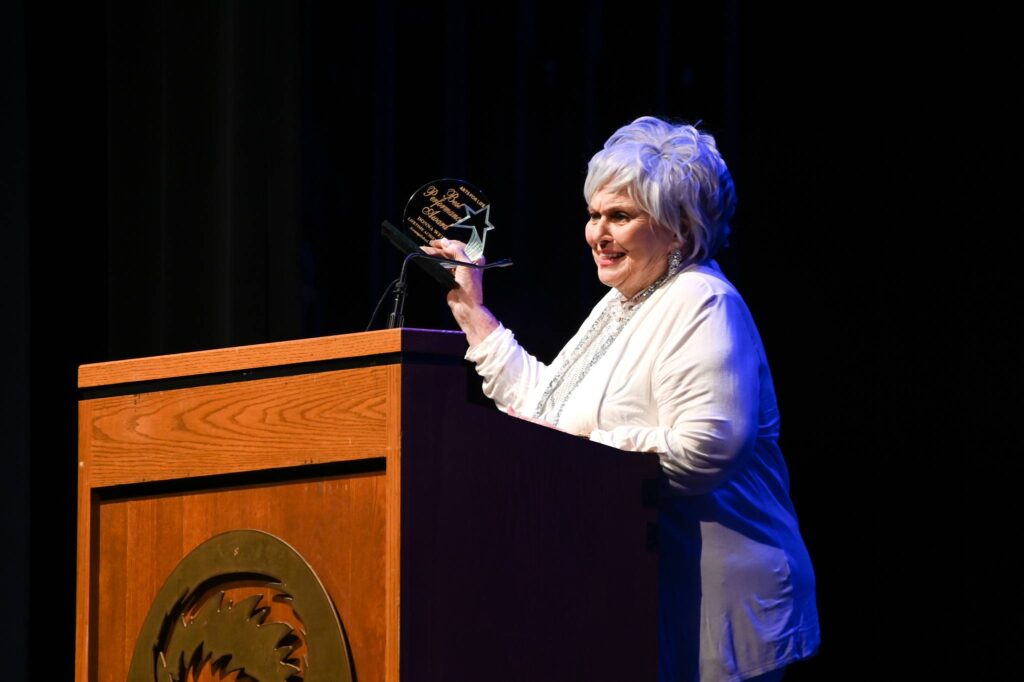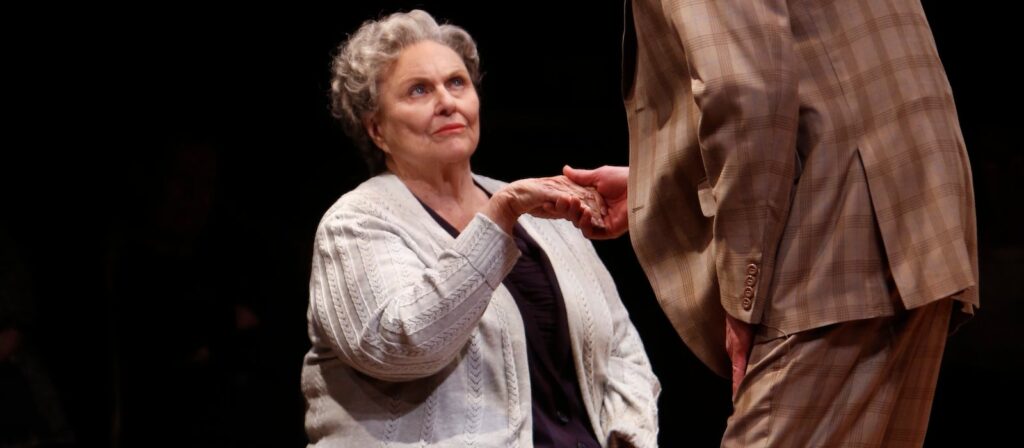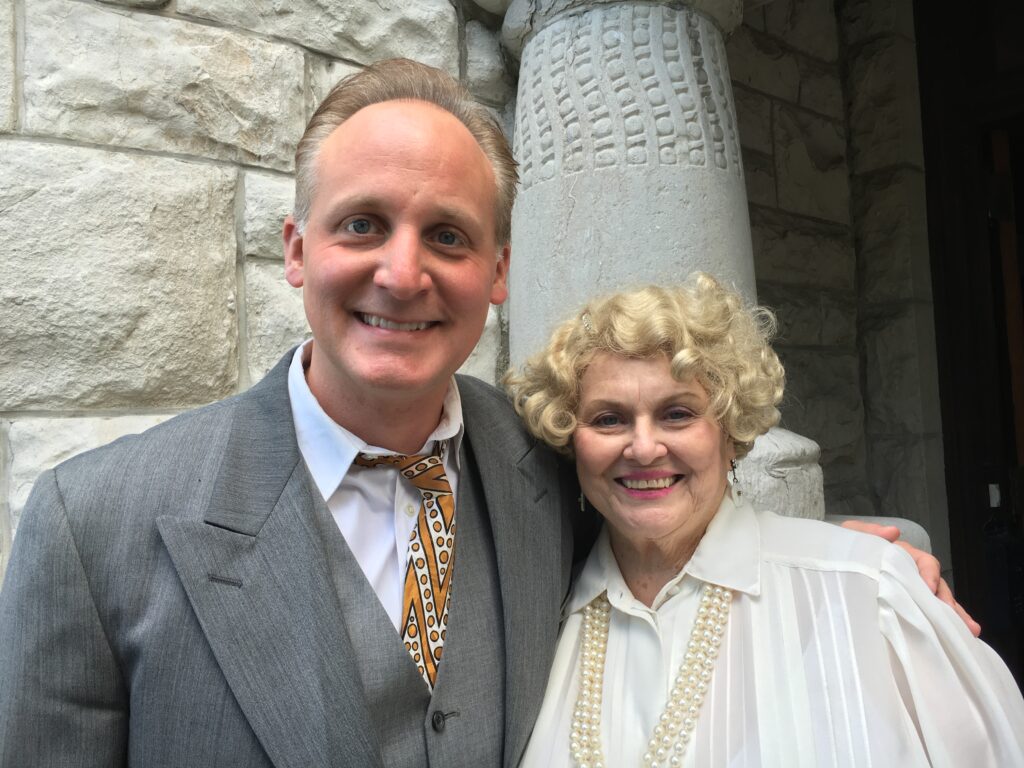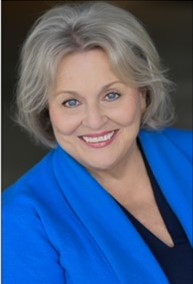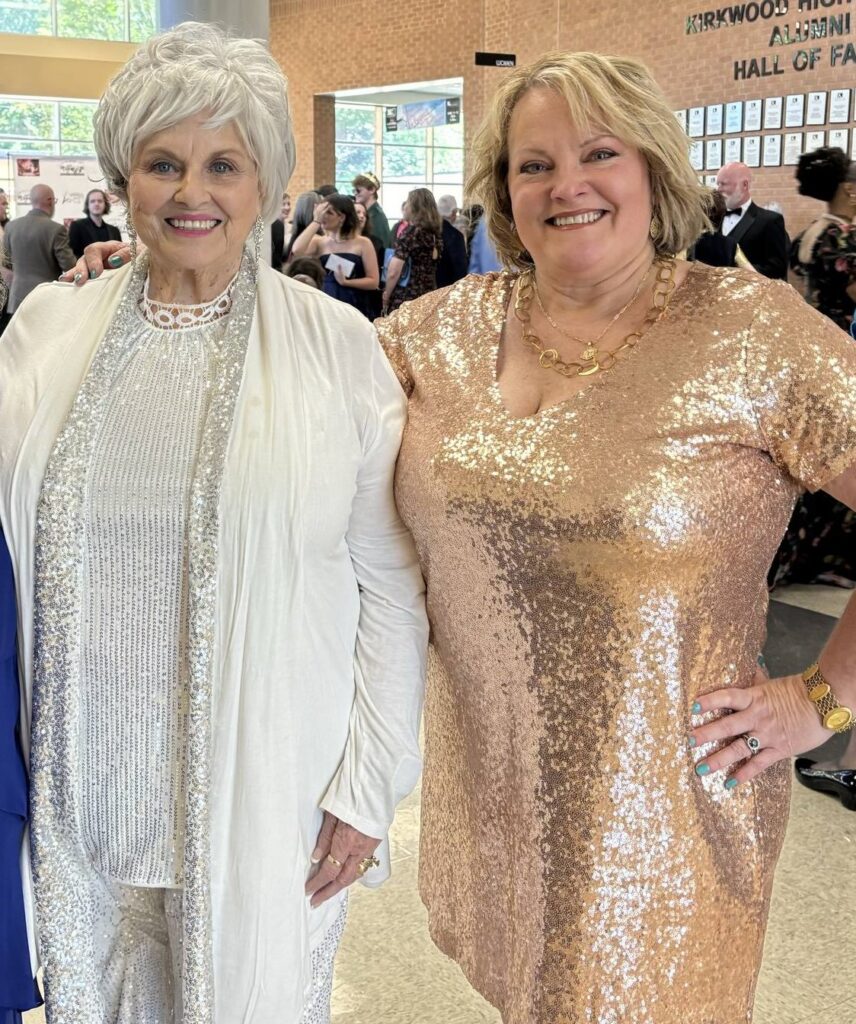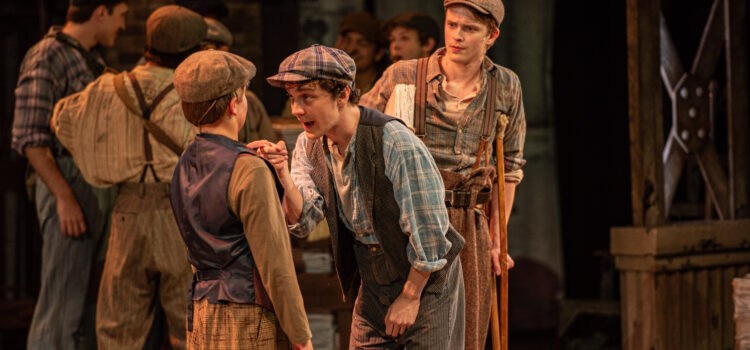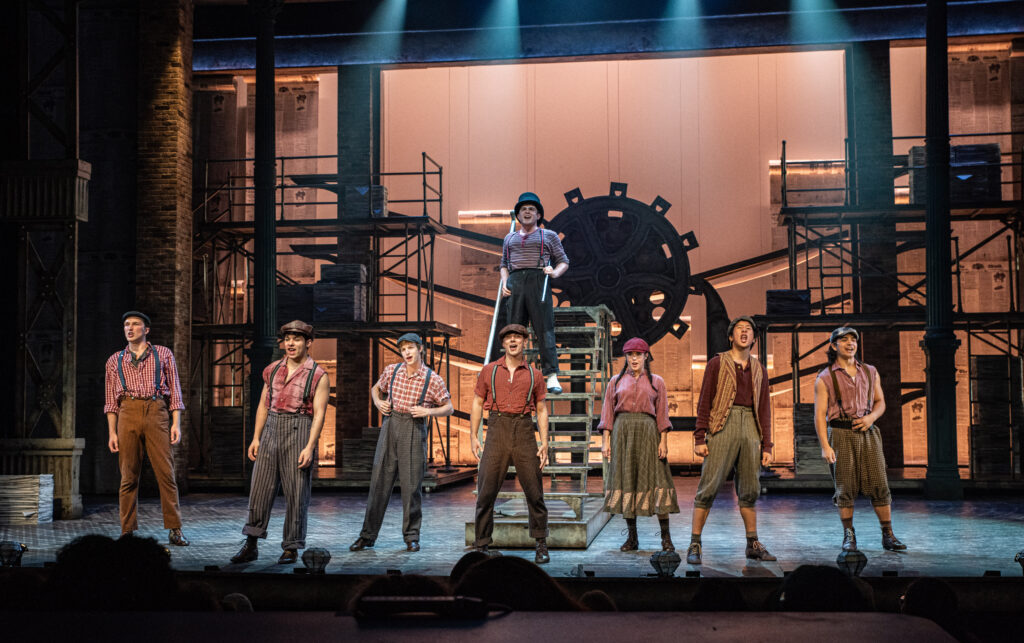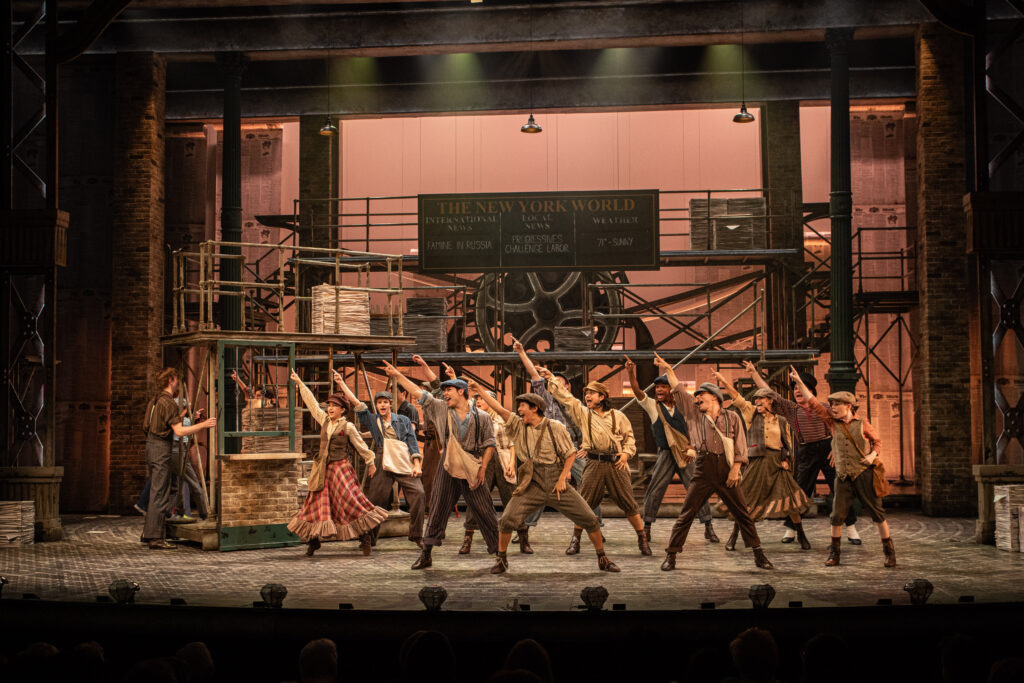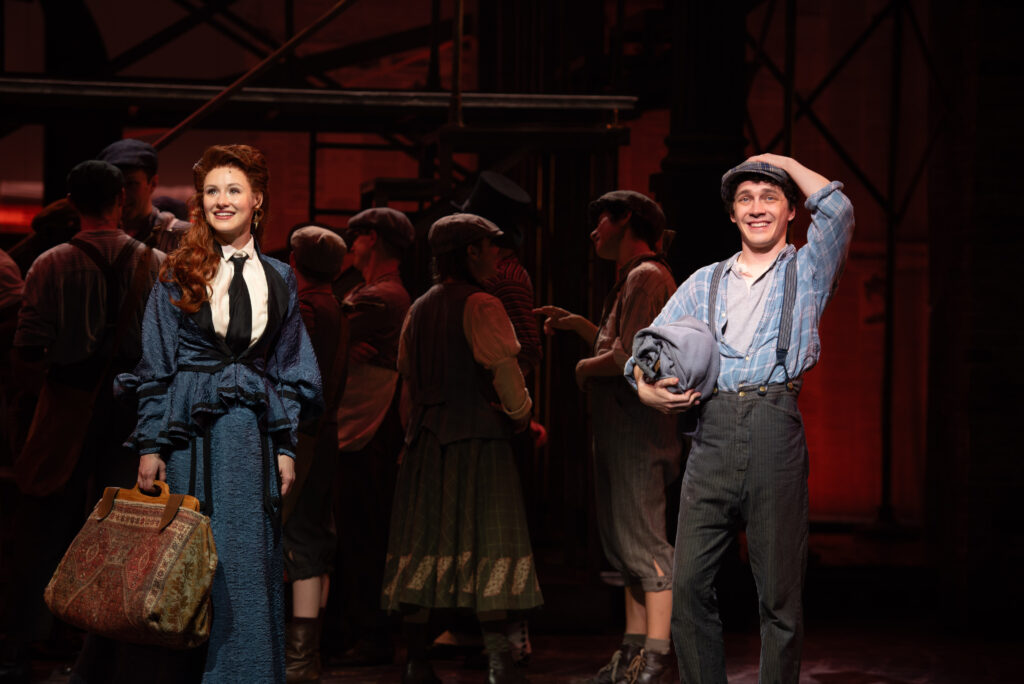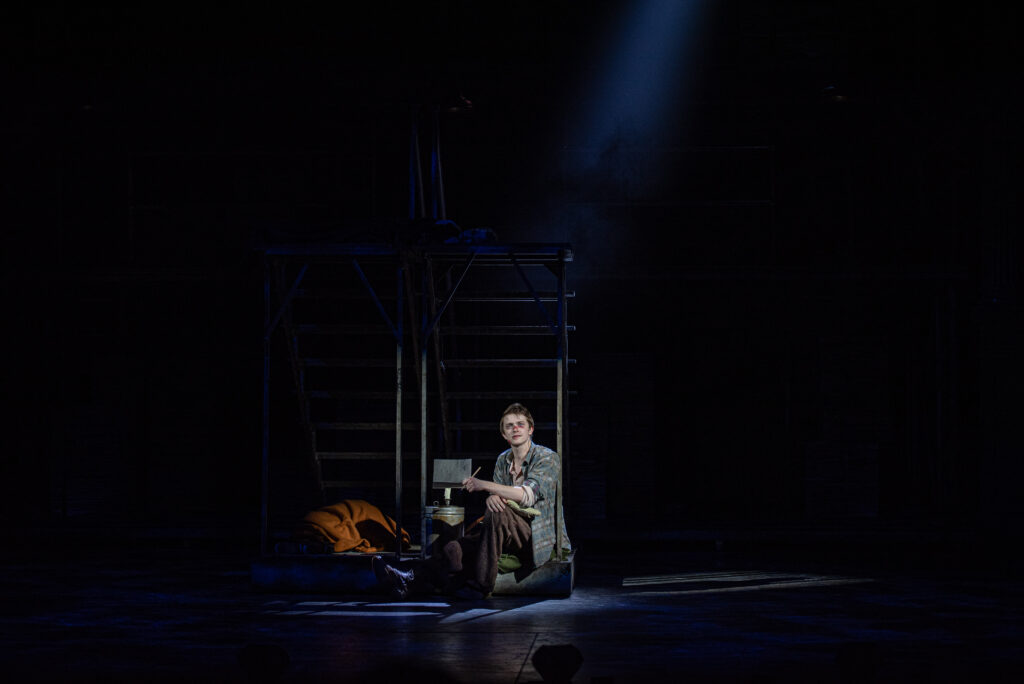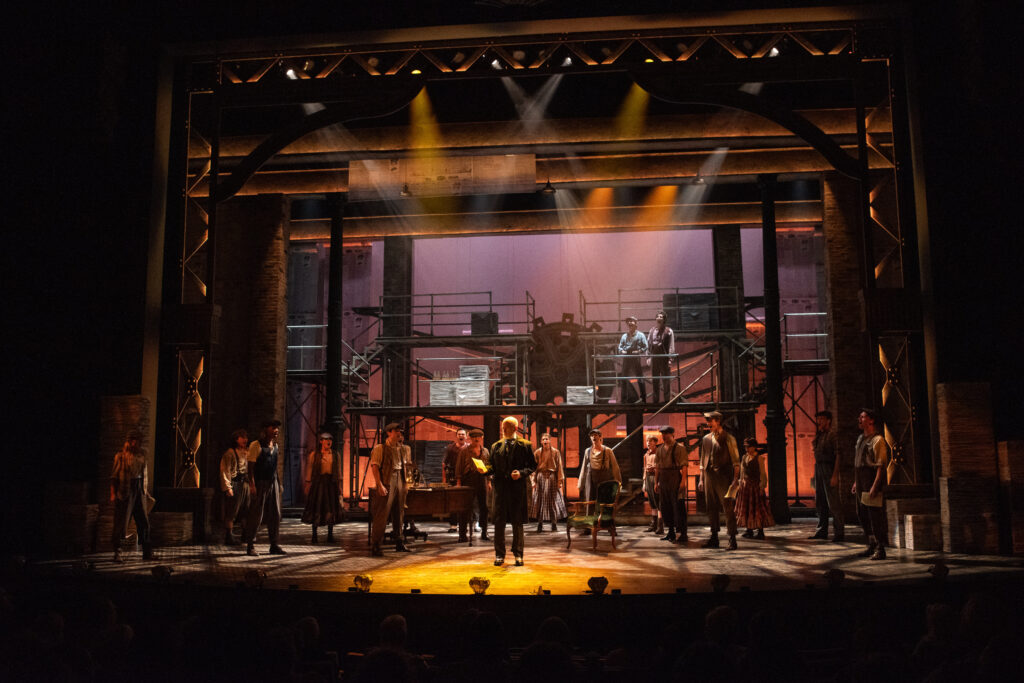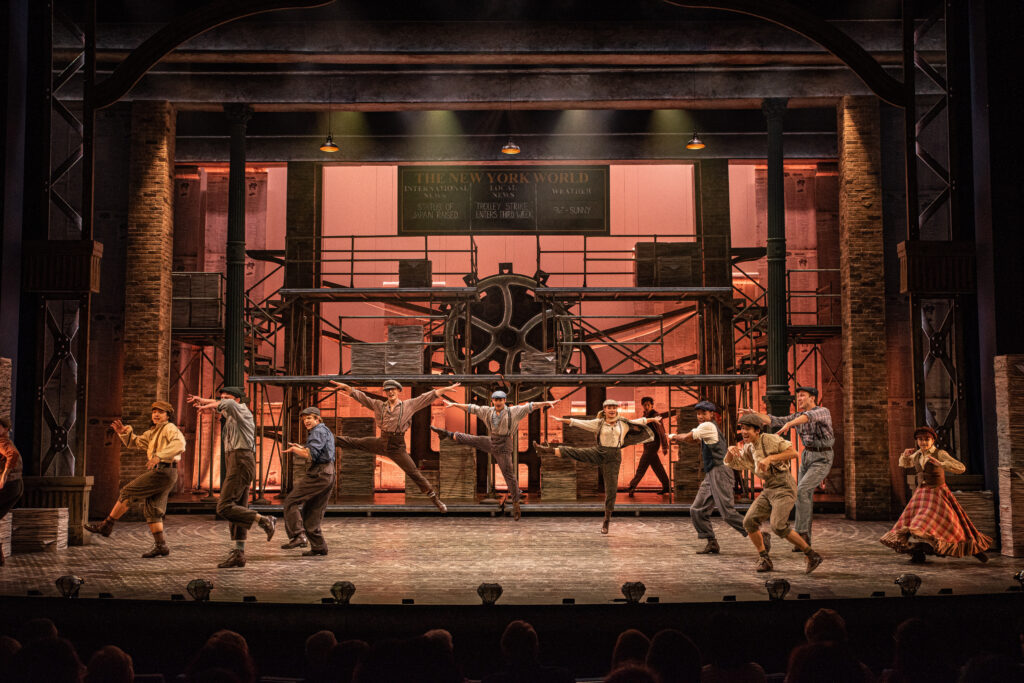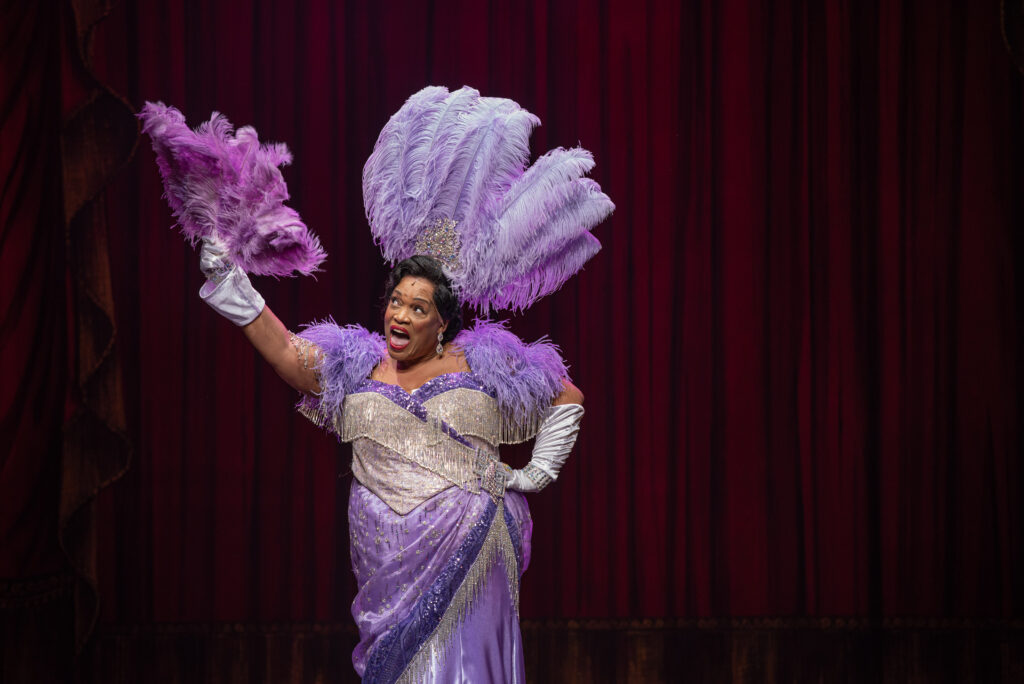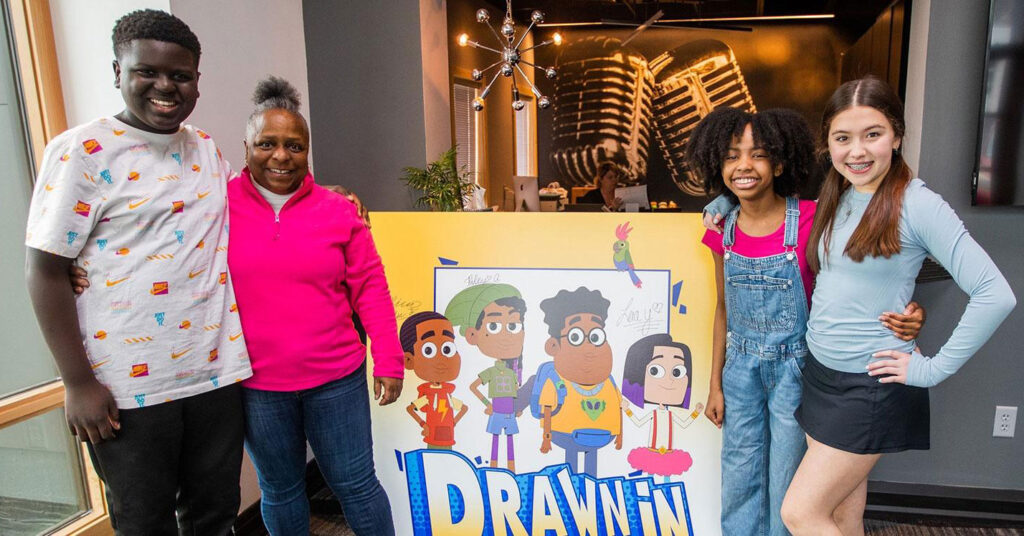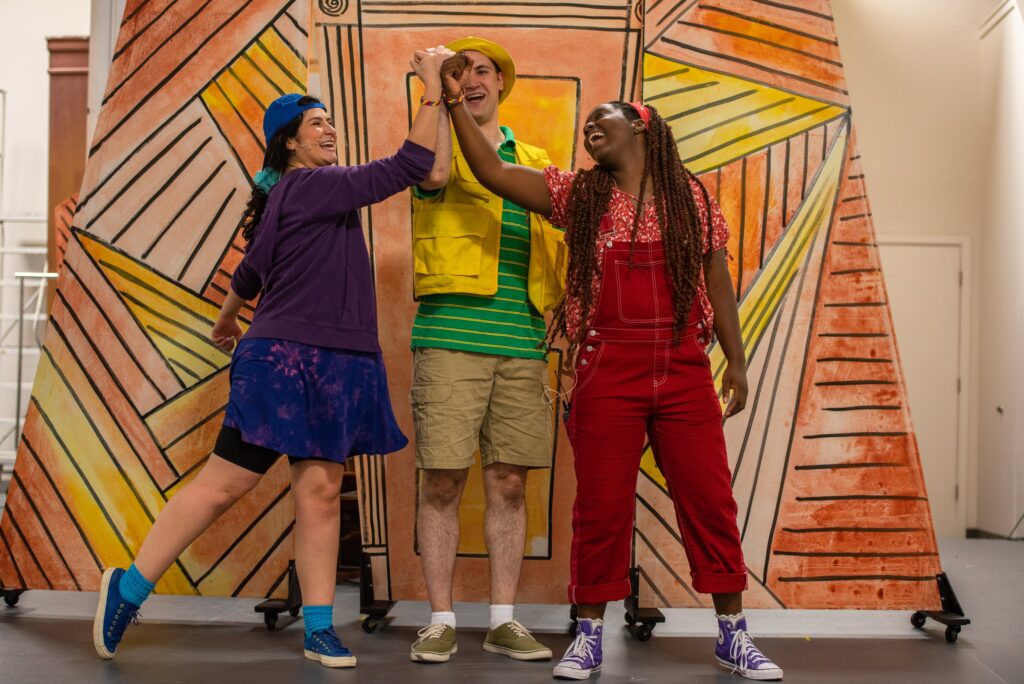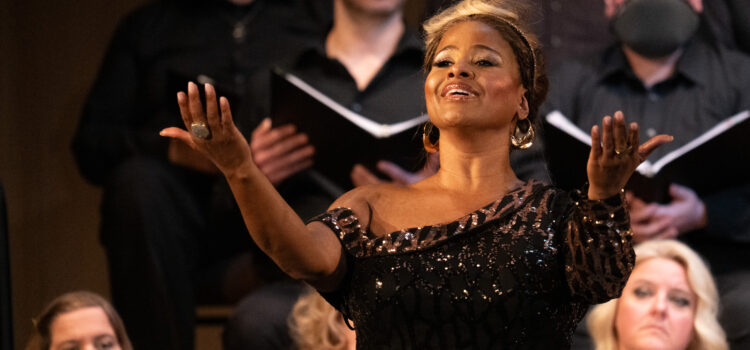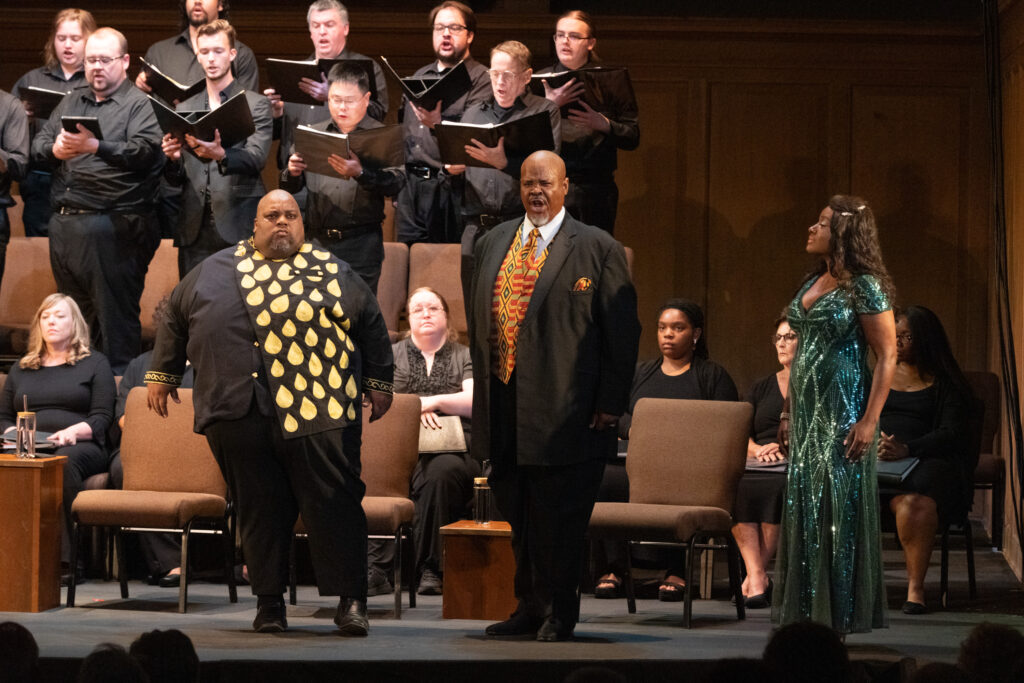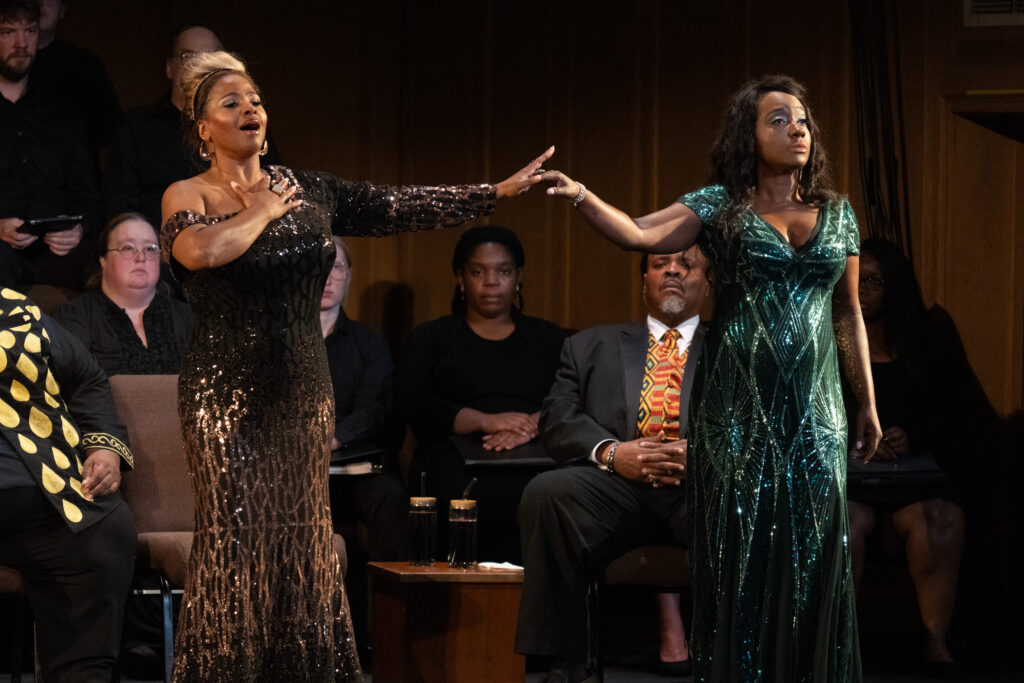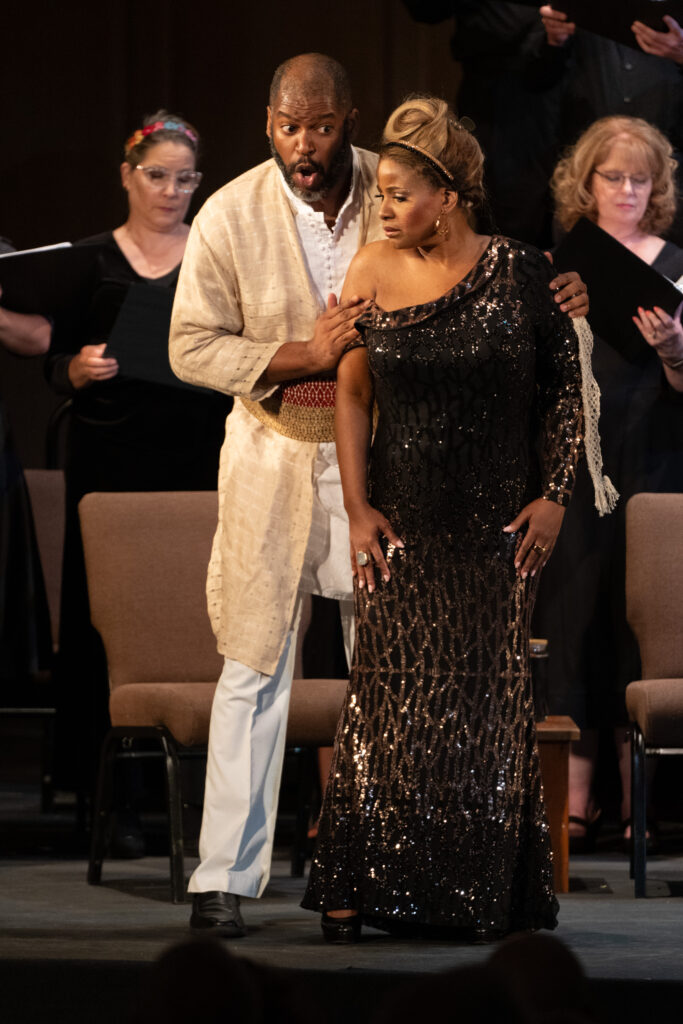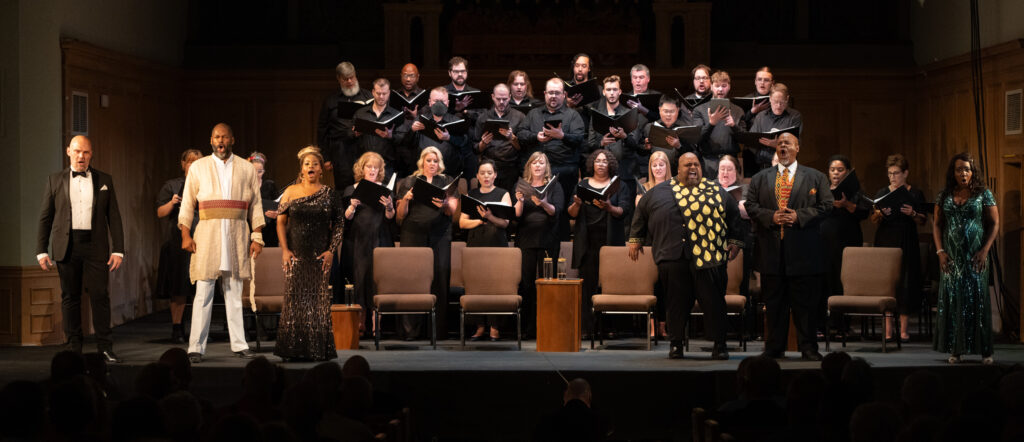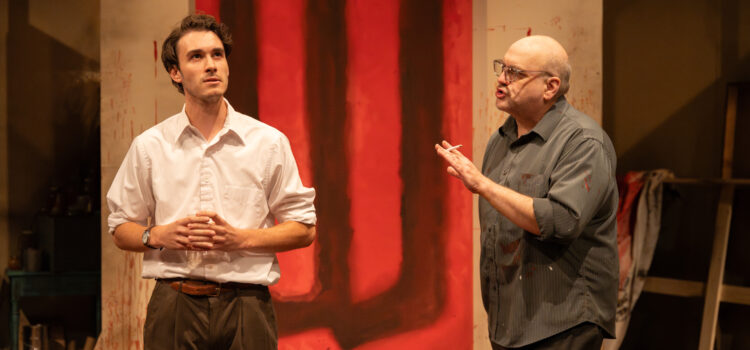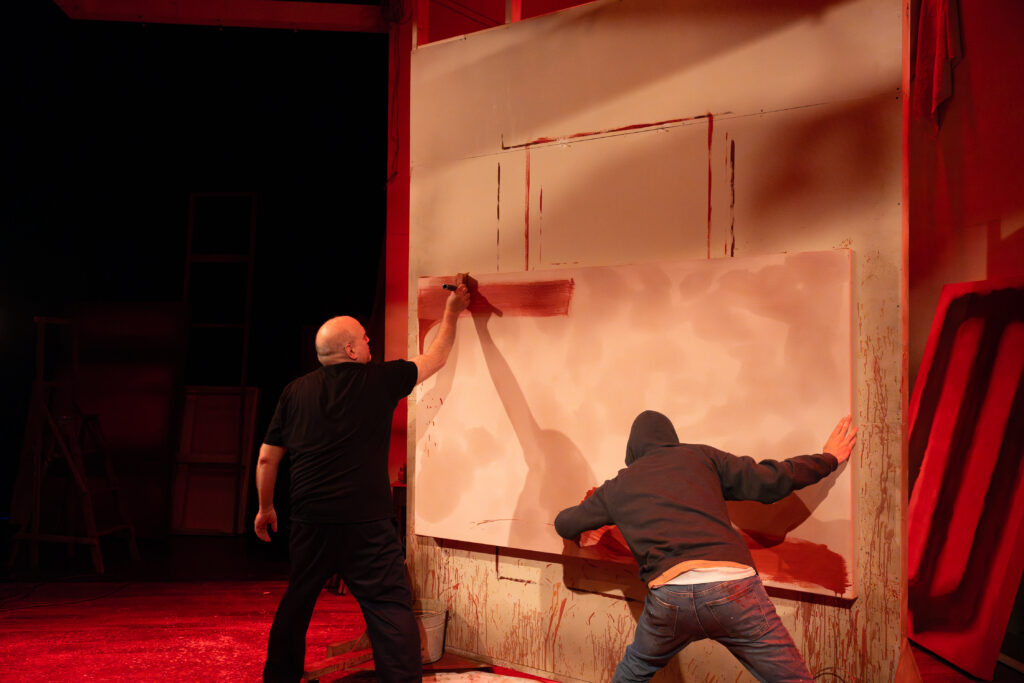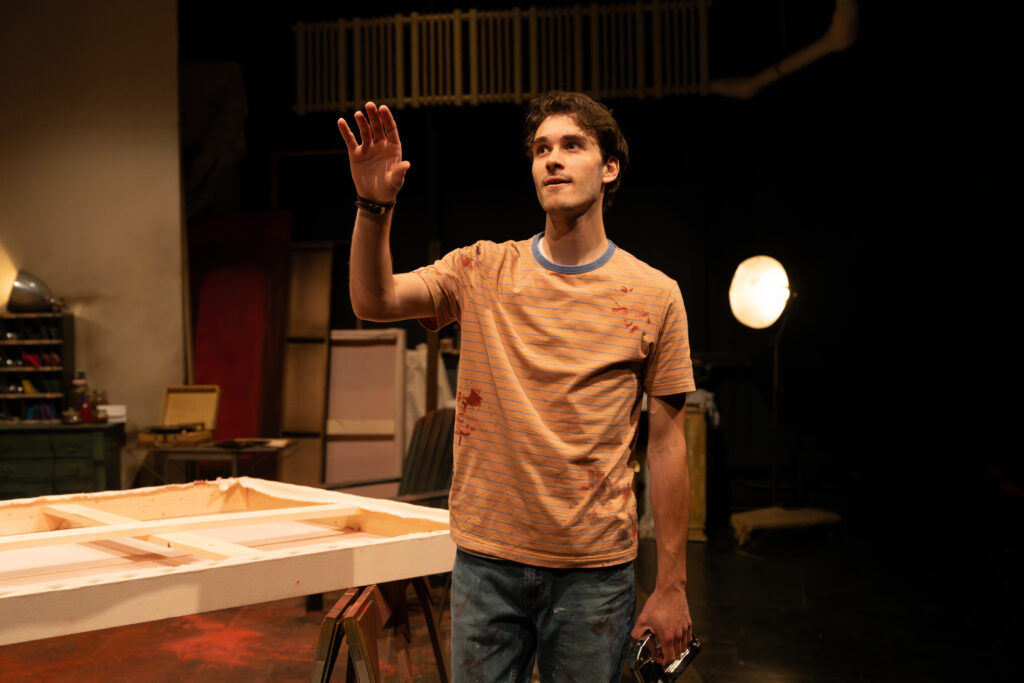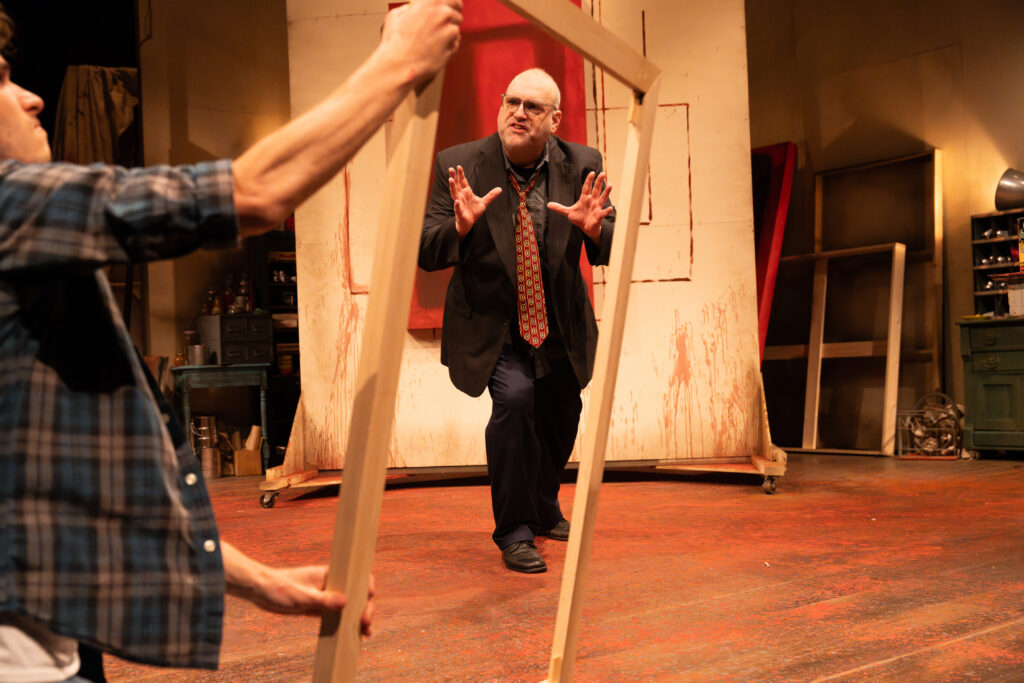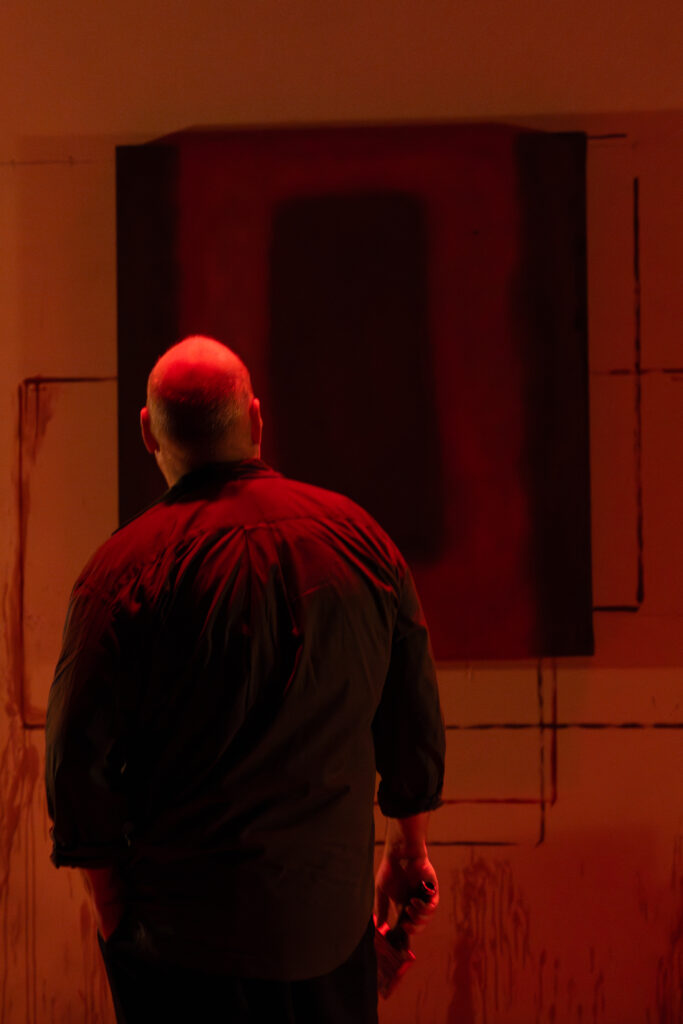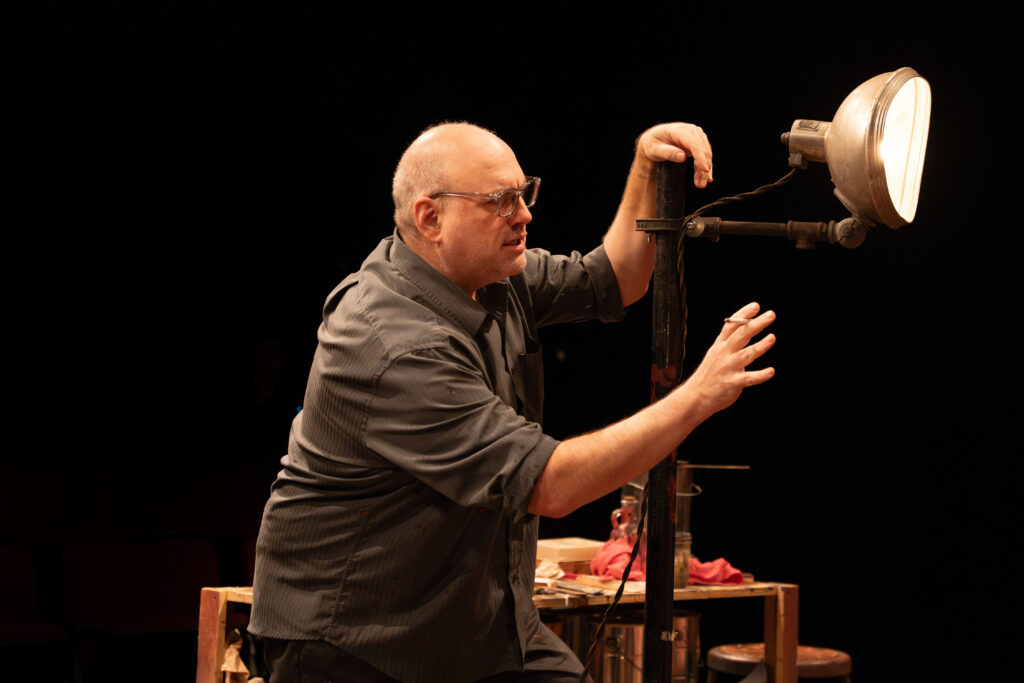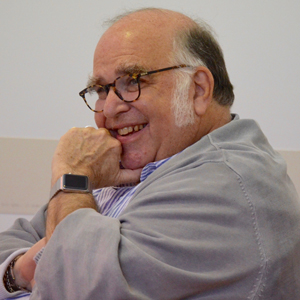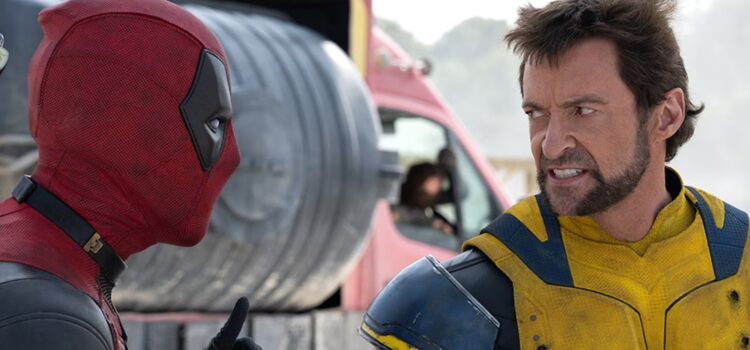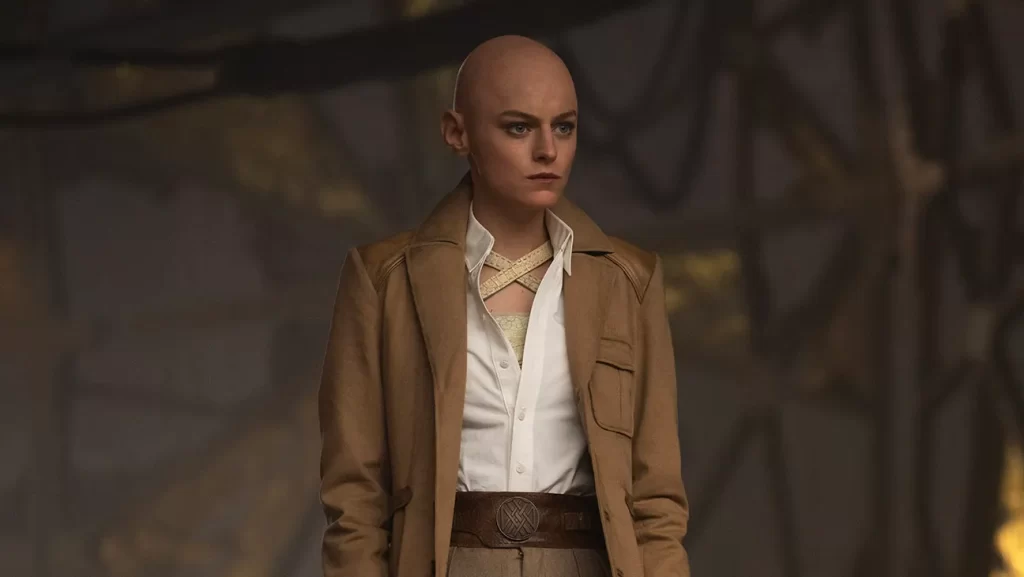By Lynn Venhaus
A pair of farce specialists aim for over-the-top in spectacular style in “Ruthless! The Musical,” a kitschy, campy stage mom-showbiz melodramatic throwdown that emphasizes big – in ambition, voices, and stylistic flourishes.
Very funny Sarah Gene Dowling and Sarajane Clark trade wits as the clashing divas who challenge each other in this small-scale musical spoof. It features an all-female cast and a scheming fame-obsessed jazz-hands kid.
This is the first pairing of the Stray Dog Theatre favorites – think Bea Arthur and Angela Lansbury in “Mame,” and they easily affect an exaggerated form of movie-star acting that’s part early soap opera, part “Saturday Night Live” and “The Carol Burnett Show” sketch imitations.
The silliness is carefully controlled chaotic fun, deftly directed by veteran Justin Been, as Stray Dog continues its penchant for broad comic material resembling the Charles Busch plays that they’ve previously produced: “Psycho Beach Party,” “Red Scare on Sunset,” “Die, Mommy, Die!” and “Vampire Lesbians of Sodom.”
Dowling, looking like she stepped out of the pages of “Ladies’ Home Journal,” is stereotypical ‘50s housewife Judy Denmark, who answers her always-ringing landline by identifying herself as “Tina’s Mom.”
Any similarities with super moms of that golden era – Donna Reed, Harriet Nelson, Jane Wyatt and Barbara Billingsley — is intentional.
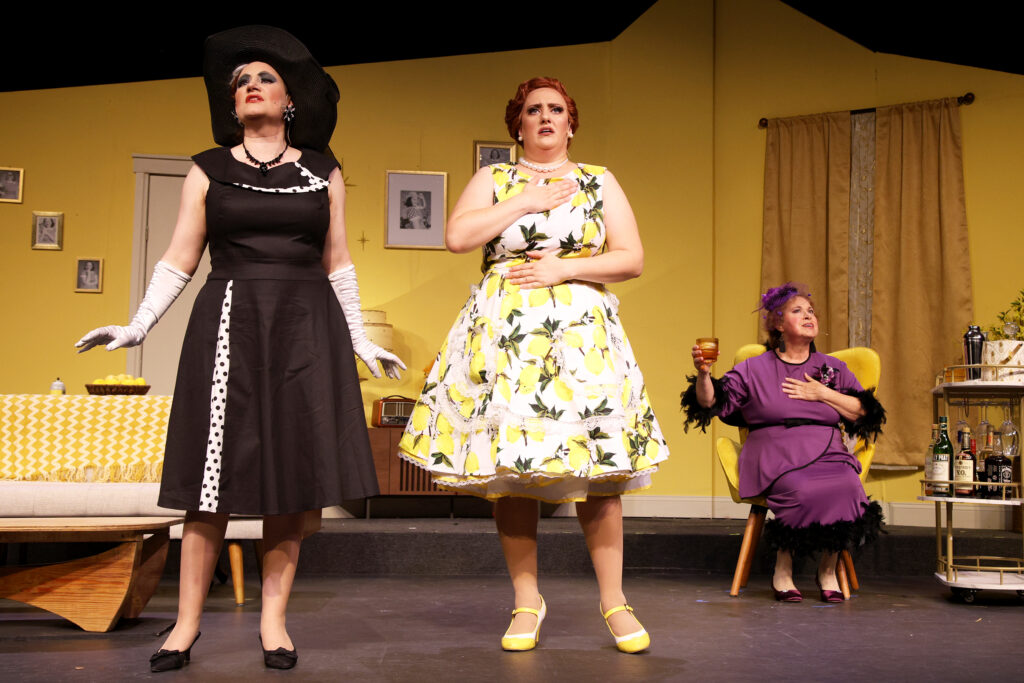
In scenic designer Rob Lippert’s carefully appointed mid-century modern home decked out in canary yellow, Judy keeps it spotless by her obsessive house-cleaning. Judy professes to be content, and a running gag is her affection for Pledge furniture spray.
But when a mysterious talent agent, Sylvia St. Croix, rings her doorbell, things are going to take a few turns. As Sylvia, Clark, who can out-Joan Crawford anyone, conjures bygone Hollywood glamour through stunning black-and-white outfits, complete with matching hats and turbans.
Costume designer Colleen Michelson has assembled an outstanding panoply of Audrey Hepburn-worthy ensembles for Clark, and Dowling’s retro floral print dress is perfection.
But some of the other women’s dresses are too short or ill-fitting, such as Eve’s tight emerald-green dress that she keeps tugging at while she’s flitting about.
You know this is going to be a wacky romp by reading the program: “Please Note: This production contains smoke effects, replica firearms, loud noises, and children doing very bad things. Viewer discretion is advised.”
In a daffy debut, Finley Mohr is poised as chipper “8-year-old” Tina, who won’t let anyone stand in the way of her becoming a star. When she isn’t cast as Pippi Longstocking in her school musical, hell hath no fury like a sociopathic stage brat spurned.
Is she another “The Bad Seed” who looks like Little Orphan Annie? For she takes aim at her rival, Louise Lerman, played with comedic flair by Sarah Lantsberger as a far less talented kid. Louise’s parents secured her the lead through third-grade teacher Miss Myrna Thorn, and nimble performer Anna Langdon is the very dramatic instructor who is also a conniving and frustrated actress.
Laura Kyro goes all in as haughty Lita Encore, a self-important theater critic who hates musicals – and pours her loathing, Ethel Merman-style, into an “I Hate Musicals” number. When she shows up to review “Pippi in Tahiti,” we learn she has ties to the Denmarks. Dun dun duuun!
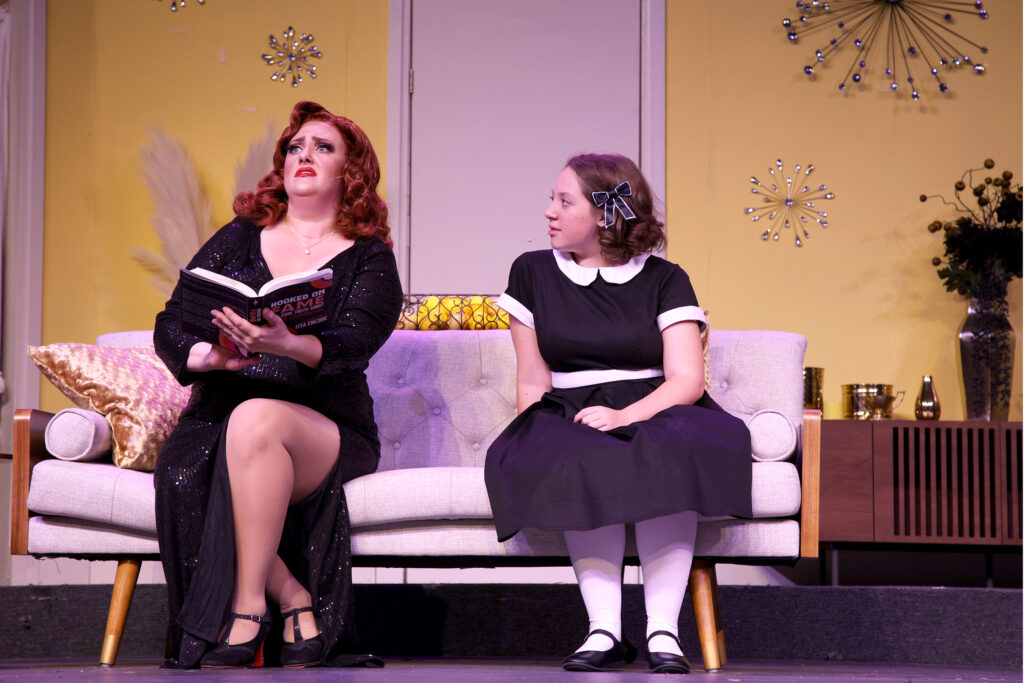
These bizarre six degrees of separation are revealed at various times, giving the feeling of whiplash, and old-timey melodramas that once were staged on showboats. The plethora of plot twists are a mix of destiny and flimsy fictional tropes.
Before the first act wraps, we discover Judy is the daughter of Ruth Del Marco, a Broadway star who supposedly took her own life after a scathing review by Lita. Turns out the talentless Judy discovers her gifts and becomes a very different character in the second act.
The book and lyrics by Joel Paley and music by Marvin Laird are a blend of John Waters snark, Douglas Sirk 1950s ‘women’s pictures’ and nods to “All About Eve,” “Gypsy,” and other show-bizzy tales.
The show debuted off-Broadway in 1992, then was revised in 2015 into a streamlined 90-minute version without an intermission. This production is performed in two acts, with a 10-minute intermission, and is more than 2 hours’ long, which drags out the jokes.
The second act takes place in a New York City penthouse, where vainglorious prima donna Ginger Del Marco (Dowling) is ensconced with her manipulative assistant Eve (Lantsberger).
Del Marco is free of the constraints of being a wife and mother, for Tina has been sent away to the Daisy Clover School for Psychopathic Ingenues. Ginger has won a Tony Award and has become devious and insufferable in her narcissism.
The supporting women come and go, playing various characters – and it’s best to be surprised by the identities and ensuing shenanigans.
The six females are all belters and have big Patti LuPone moments to sing out, mostly tongue-in-cheek style. Clark’s signature number “Talent” is reprised with the confident Mohr, whose cutthroat showbiz aspirations are the point of “Born to Entertain” and “To Play This Part.” The beaming Mohr can tap dance too, and Sara Rae Womack handled the choreography,
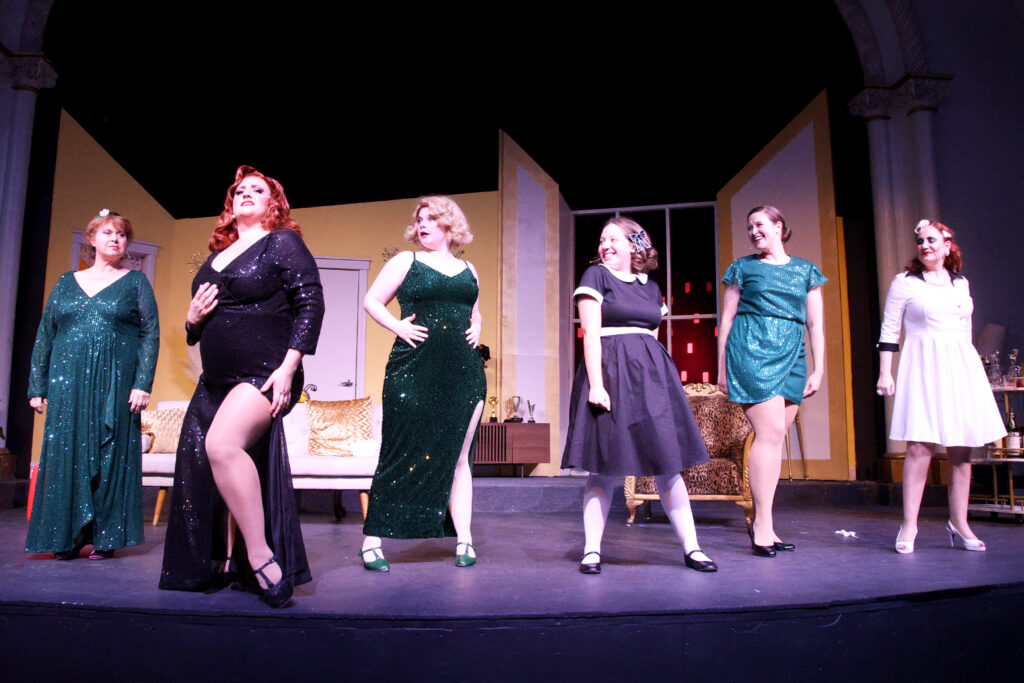
Dowling and Mohr work well as the mother-daughter duo, and feign affection in “Kisses and Hugs,” “Angel Mom” (with Sylvia) and “Parents and Children.”
Clark teams up with Dowling on “Where Tina Gets It From” and delivers a Cruella de Ville-type number “I Want the Girl.”
Each character has at least one showcase number – Langdon on “Teaching Third Grade,” and Lantsberger on “A Penthouse Apartment” as Eve and “The Pippi Song” as Louise.
Musical director Randon Lane sleekly leads the four-piece band: Mike Hansen on percussion, M. Joshua Ryan on bass, Mary Jewell Wiley on reeds, and he’s on keyboards. Been has doubled as sound designer, and his snippets of swelling-strings movie scores add to the atmosphere, as does Tyler Duenow lighting designs.
“Ruthless!” is brash in its trashy escapades, with pleasing production elements that involved creative collaboration. Designed to tip its hat to the showbiz dreams all theater-loving folks grew up on, the peppery parody is performed with noteworthy zeal by blithe spirits. The sharp six are clearly having a blast playing together in the sandbox.
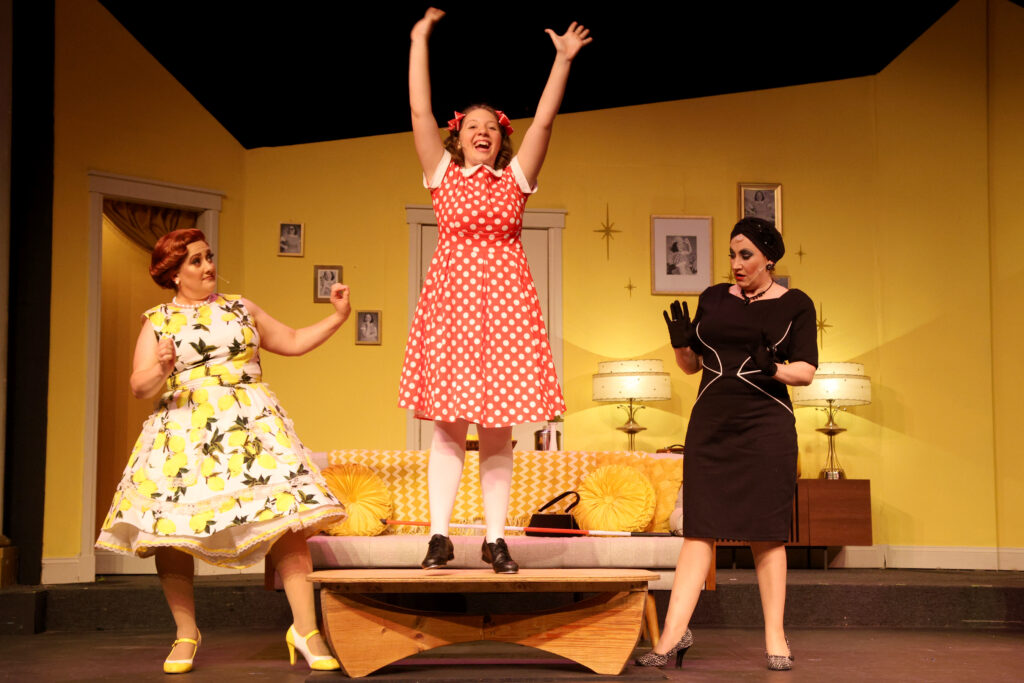
Stray Dog Theatre presents “Ruthless! The Musical” from Aug. 1-24 at the Tower Grove Abbey, 2336 Tennessee Avenue, St. Louis. Showtimes are Thursdays through Saturdays at 8 p.m., with additional performances at 2 p.m. Sunday, Aug. 11, and Sunday, Aug. 18. Gated parking is available. For more information and ticket reservations, call 314-865-1995 or visit www.straydogtheatre.org.
Accessible Performances — ASL Interpretation: The 8/2, 8/9, 8/16, and 8/23 performances will be presented with ASL interpretation by students from Southwestern Illinois College. ASL interpreted performances are suitable for audience members who are deaf, deafened, or have hearing loss. They can also be valuable for people who are learning ASL.

